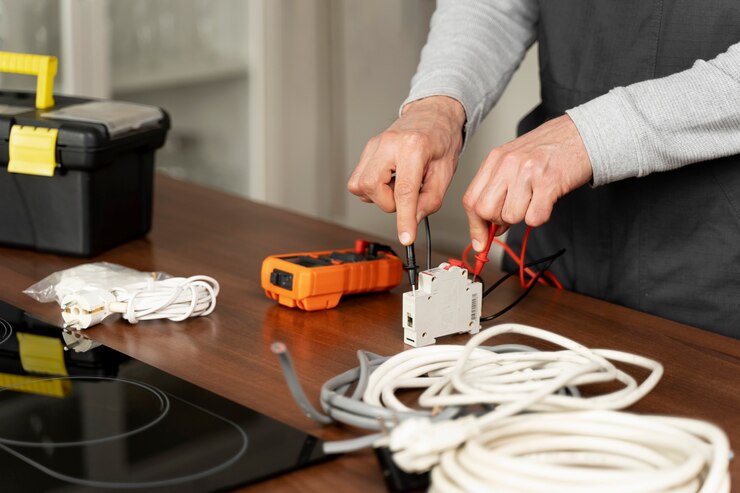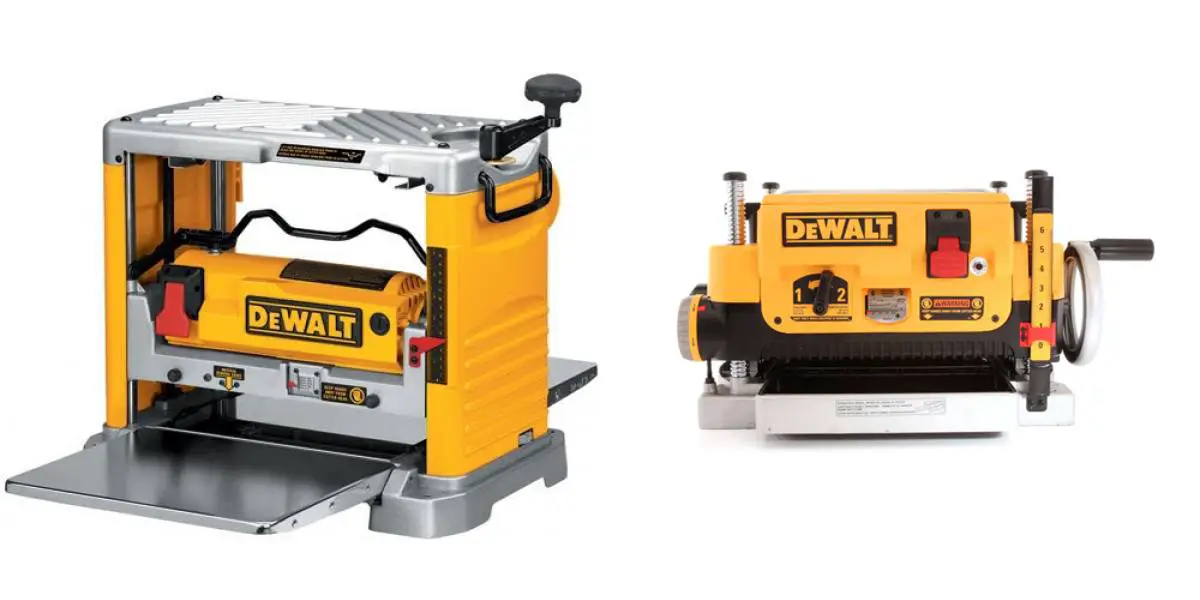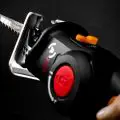Power Tools
How to Use Porter Cable Biscuit Joiner for Woodworking Projects
If what you need from your biscuit joiner is quality, versatility, and great results, then Porter Cable is the brand to go for!
Porter Cable Biscuit joiners are famous for these three aspects, and you can even find some budget-friendly options. For a long time, this manufacturer has provided woodworkers, both professional and DIYers from different woodworking disciplines, with top-quality biscuit joiners.
The Porter Cable Biscuit joiner can use two blade sizes which can establish the space needed for working with seven wood biscuit sizes. For this reason, you can use it for making joints on both large and small wood pieces if need be.
But that’s enough marketing for Porter Cable Biscuit joiners. Today, I’ve written a multi-step guide on how to use Porter Cable Biscuit joiner for your woodworking projects.
How to Use Porter Cable Biscuit Joiner for Woodworking Projects
Using a Porter cable Biscuit joiner is not hard because, fortunately, the manufacturer prioritized ease of use.
Here is how to go about it:
1. Prepare the Wood
To achieve a usable joint, I recommend you square your wood first, especially if you are a beginner. If you are unable to achieve this, at least make sure that the sides that end up facing each other are flat. What’s more, the two slabs need to have the same height for the bottom and top to sit evenly.
If you don’t know how to make the wood square, feel free to buy ready-made wood pieces at stores like Lowe’s or Home Depot. That said, make sure the manufactured materials you’ve purchased aren’t warped.
To be specific, I’ll be using a pair of pine stair treads I bought from Home Depot. Lowe’s and Home Depot are equally reliable stores, but Lowe’s pine treads have oak, while Home Depot’s have veneer.
2. Set Up Your Workstation
It is important to have a proper working area and to have the right materials and power tools as well.
First, make sure your workbench’s surface is even and that the base is stable and sited on a flat surface. Something else to consider is a stable back for the board to push against as you make the biscuit holes. Next, I will explain to you how to use your Porter Cable Biscuit joiner.
3. Use your Biscuit joiner
Remember when I said to have a stable surface for the board to lean against as you make the biscuit holes? If you don’t have a stable surface, you can fasten a flat wood piece atop it.
Position the Biscuits
So, how many biscuits do you have? The number of biscuits is considerably reliant on the size of the board you intend to establish a joint. You will require at least two biscuits on all ends for boards longer than 12 inches.
On the other hand, if you are working with boards longer than 2 feet, I would advise you to use a third biscuit at the center. This guarantees that the boards uphold their vertical support at the center.
I used 7 biscuits since the workpiece I was establishing was supposed to carry 1 ton. As you mark the lines for the cuts you’ll make on the board, the distance between a pair of biscuit holes is less essential than ensuring the holes are horizontally aligned.
Achieving Horizontal Alignment with a Porter Cable Biscuit joiner
It is vital to attain horizontal alignment, and for this, it would be best to fold the two wood pieces atop each other. Next, use the marker on both boards at the right position.
Making the Biscuit Holes
Now, it’s time to cut the biscuit holes. The first thing to check on is the flatness of the workbench and workpieces. Make sure the side of the lumber facing down is entirely even with your workbench. I’ll try and make your work easier by recommending you simply clamp these two surfaces to achieve evenness.
Take your clamps out from storage and use them to fasten the board to the workbench. This will also prevent the board from slipping horizontally. Now, take your Porter Cable Biscuit joiner and position it against your workpiece.
Next, align the mark on your power tool that shows the blade’s center with the line you made on the board.
Using your Biscuit Joiner
If your Porter Cable features an adjustable fence, you don’t have to use it when making cuts into the workpiece at 900.
Now, go ahead and make the hole. Push down the biscuit joiner with your dominant hand, and gradually push the blade into your workpiece. The moment the blade extends fully, you can withdraw it gradually.
A biscuit joiner is different from a power drill because you will have to keep the switch on until the blade retracts to its initial placement.
4. Attaching the Two Wood Pieces
Before you use any glue on these two pieces of wood, begin with a dry fit. Also, ensure that every biscuit hole properly aligns vertically and horizontally with its partner. If not, the biscuit will snap, making both holes unusable. So, if some of the holes are not aligned correctly, you may have to adjust the position of the biscuit.
After checking all that, make sure the boards fit properly in the dry fit so that you can begin applying the glue. Do not pour too much glue, it’ll be an overkill. A small amount will be sufficient to hold the biscuits in position.
To keep the bond seamless, I recommend using two clamps to attach the board properly. Also, ensure the clamps are tight enough to guarantee an adequate bond.
So, What Next?
Check the glue bottle to confirm how long it takes to cure. Once it is cured, detach the clamps and make your workpiece neater. You can either use an orbital sander or sand it manually; it all depends on the size and your preferences.
I prefer a random orbit sander to smoothen my workpieces. Nonetheless, when utilizing a hand-held sander, make sure you don’t over-sand the glue seam, or you will form an incurvature to the middle of the platform. With that in mind, sand the edges to conceal any imperfections.
Why You Should Trust Us
At Woodworking Tool Guide, we know one size doesn’t fit all! We cater to every woodworker, from beginner to pro, with insights and recommendations tailored to your skill level, project needs, and budget. We take the guesswork out of choosing the right tools, whether you’re tackling your first crafting a masterpiece for the ages. So grab your chisel, join our community, and let’s build something amazing together!
Woodworking Tool Guide wasn’t just born, it sprouted from a seed of passion for the craft. What started as a joyful exploration blossomed into a trusted online haven for fellow enthusiasts like you. We pour our love into meticulously chosen review selections, meticulous hands-on testing, and lab-backed insights, all to empower you with reliable, comprehensive information you can build on. So, grab your tools, trust our guidance, and let’s build something beautiful together!
Passion-Driven Expertise
Our journey started with a shared love for woodworking. The team behind the Woodworking Tool Guide is comprised of individuals who are not just writers but passionate woodworkers themselves. This shared enthusiasm ensures that our content is crafted with a deep understanding of the craft and an authentic appreciation for quality tools.
Top Tool Guides Online
Woodworking Tool Guide has rapidly ascended to become one of the premier online destinations for tool guidance. Our commitment to excellence and the accuracy of our information has positioned us as a reliable source for both beginners and seasoned woodworkers seeking trustworthy advice on the best tools for their projects.
User-Centric Approach
Our content caters to every woodworker, from rookies just starting out to seasoned pros tackling intricate projects. We tailor our insights and recommendations to your skill level, project needs, and budget, ensuring you find the perfect tools to match your unique woodworking journey. So step into your workshop, grab your tool belt, and let Woodworking Tool Guide be your trusted companion as you craft your masterpieces.
Continuous Support and Innovation
Woodworking is an ever-evolving craft, and so is our commitment to supporting you. We are dedicated to bringing you the latest information on woodworking tools, techniques, and trends. Our team is actively working to expand our content and bring you more valuable insights, ensuring that you stay well-informed in your woodworking adventure.
Hands-On Experience
Ditch the endless research rabbit hole! At Woodworking Tool Guide, we believe in actionable advice, not armchair analysis. We get our hands dirty, putting every tool through its paces in real-world woodworking scenarios. Whether it’s the precision of a table saw, the versatility of a router, or the tactile satisfaction of a handplane, we test for performance, durability, and user-friendliness. No more sifting through dry specs – we deliver practical insights you can trust to transform your woodworking dreams into reality.
Woodworking Tool Guide isn’t just a review site, it’s your trusted companion on the sawdust-filled path to woodworking mastery. Our expert team, led by veteran David Jones, meticulously tests and explains tools in terms you understand. We cut through the jargon, bias, and confusion with real-world insights and honest evaluations. Join our passionate community, where decades of experience, cutting-edge knowledge, and shared love for the craft come together to guide you every step of the way. So grab your chisel, buckle up, and let’s embark on this exciting woodworking adventure, together!
Conclusion
Well, there you go! How to use your Porter Cable Biscuit joiner for woodworking projects.
It’s easy, right? In just a few steps, you get to join several parts of a workpiece and create a masterpiece!
Hopefully, you have understood how to use your biscuit joiner and made your future project easier to handle!





